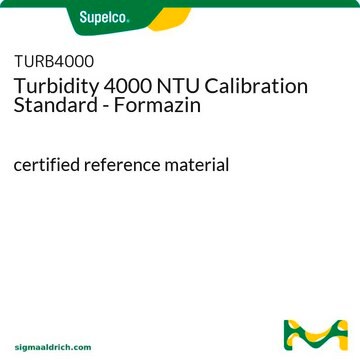259705
Methyl formate
spectrophotometric grade, ≥98%
Synonym(s):
Formic acid methyl ester
About This Item
Recommended Products
grade
spectrophotometric grade
Quality Level
vapor density
2.1 (vs air)
vapor pressure
32.81 psi ( 55 °C)
9.21 psi ( 20 °C)
Assay
≥98%
form
liquid
autoignition temp.
842 °F
expl. lim.
23 %
technique(s)
UV/Vis spectroscopy: suitable
impurities
<0.010% water
evapn. residue
<0.0005%
refractive index
n20/D 1.343 (lit.)
pH
4.0-5.0 (20 °C, 200 g/L)
bp
32-34 °C (lit.)
mp
−100 °C (lit.)
density
0.974 g/mL at 20 °C (lit.)
λ
H2O reference
UV absorption
λ: 259 nm Amax: 1.00
λ: 260 nm Amax: 0.70
λ: 265 nm Amax: 0.20
λ: 270 nm Amax: 0.04
λ: 310-400 nm Amax: 0.01
SMILES string
[H]C(=O)OC
InChI
1S/C2H4O2/c1-4-2-3/h2H,1H3
InChI key
TZIHFWKZFHZASV-UHFFFAOYSA-N
Looking for similar products? Visit Product Comparison Guide
Related Categories
General description
Application
- Bifunctionality of Re Supported on TiO(2) in Driving Methanol Formation in Low-Temperature CO(2) Hydrogenation.: This article explores the catalytic roles of methyl formate in methanol production from CO2 hydrogenation, providing a pathway for sustainable chemical synthesis (Urakawa A et al., 2023).
Signal Word
Danger
Hazard Statements
Precautionary Statements
Hazard Classifications
Acute Tox. 3 Dermal - Acute Tox. 3 Inhalation - Acute Tox. 3 Oral - Eye Irrit. 2 - Flam. Liq. 1 - STOT SE 1 - STOT SE 3
Target Organs
Respiratory system
Storage Class Code
3 - Flammable liquids
WGK
WGK 2
Flash Point(F)
-2.2 °F - closed cup
Flash Point(C)
-19 °C - closed cup
Certificates of Analysis (COA)
Search for Certificates of Analysis (COA) by entering the products Lot/Batch Number. Lot and Batch Numbers can be found on a product’s label following the words ‘Lot’ or ‘Batch’.
Already Own This Product?
Find documentation for the products that you have recently purchased in the Document Library.
Our team of scientists has experience in all areas of research including Life Science, Material Science, Chemical Synthesis, Chromatography, Analytical and many others.
Contact Technical Service









